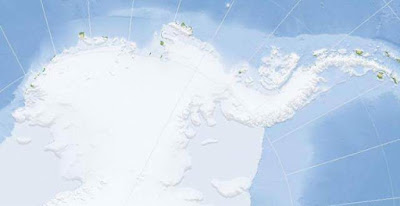Picture That Shows Pluto Could Hold Life Beneath its Frozen Surface
As the world waits for the historic most close-up images of the dwarf planet to beam back to Earth from Nasa's unmanned space probe New Horizons shortly, we can reveal features in the most recent image so far which the US space agency now believes could point to the dwarf planet once or even still being "active".
We discovered what a NASA expert believes could be an "eroded" comet or asteroid crater, laying by what could also be tectonic boundaries. The close-up images of an unusual-looking crater with a letter C shape inside, and lines running away from it, towards the lower hemisphere of Pluto, where shown to David Grinspoon.
The NASA planetary scientist in the New Horizons team felt it could be "an eroded impact crater". This is significant as impact craters are usually eroded through geological processes such as earthquakes, meaning the planet is or was "active" with a warm centre. A warm centre would mean more chance of water - the trigger for early life - being beneath Pluto's frozen surface, which Nasa had previously speculated may be the case.
In an excusive email exchange from Nasa New Horizons HQ, Mr Grinspoon said: "The C looks to me like an eroded impact crater." Due to Pluto's -229C average temperature, he said the lines were extremely unlikely to have been caused by water. He said: "I don’t see anything that looks like signs of fluid flow. If there was it wouldn’t be water because it is far too cold there."
However, he believed the lines could be further signs of former activity, adding: "There are some linear looking features which might be some kind of tectonic boundaries. But we really don’t know yet." Of this is the case, it would suggest there have been earthquakes on Pluto, and possibly other geological activity. This would mean Pluto was "active" as opposed to a "dead planet". Planets with large amounts of visible uneroded craters will usually be no longer geologically active, but ones where craters HAVE been eroded could still be, or were more recently active.
It is the movement of tectonic plates within the planet, or other geological processes, which erode the crater and is why there are only around 120 known impact craters on earth. If Pluto were active it could mean the centre were still warm enough for it to contain seas BENEATH the surface.
Chemical reactions from active rocks on an underground sea could trigger micro- organisms to evolve and it is theoretically possible for tiny organisms like those that can thrive in polar conditions on earth. NASA had speculated from previous images that there may have been ancient activity on Pluto and there could be water beneath its frozen surface. This development, adds further weight to that theory.
The possible eroded crater and fault lines close up. The dark areas could be "irradiated organics" mixed in with ice.





Comments
Post a Comment